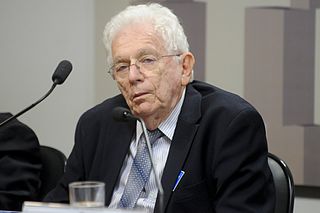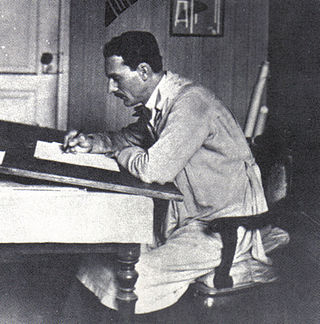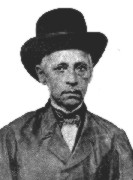Related Research Articles

Samba is a name or prefix used for several rhythmic variants, such as samba urbano carioca, samba de roda, recognized as part of the Intangible Cultural Heritage of Humanity by UNESCO, amongst many other forms of samba, mostly originated in the Rio de Janeiro and Bahia states.

The Federal University of Rio de Janeiro (UFRJ), alternatively known as University of Brazil, is a public research university in Rio de Janeiro, Brazil. It is the largest federal university in the country and is one of the Brazilian centers of excellence in teaching and research.

The Brazilian Army is the branch of the Brazilian Armed Forces responsible, externally, for defending the country in eminently terrestrial operations and, internally, for guaranteeing law, order and the constitutional branches, subordinating itself, in the Federal Government's structure, to the Ministry of Defense, alongside the Brazilian Navy and Air Force. The Military Police and Military Firefighters Corps are legally designated as reserve and auxiliary forces to the army. Its operational arm is called Land Force. It is the largest army in South America and the largest branch of the Armed Forces of Brazil.

Sociedade Brasileira para o Progresso da Ciência is a Brazilian scientific society created in 1948 by several prominent scientists, with the aim of promoting science, culture and education in the country by means of publications, conferences and political actions on behalf of science's advancement and progress. It was formed in the same spirit of two venerable institutions in the English-speaking world, the British Association for the Advancement of Science and the American Association for the Advancement of Science.

Henrique de Campos Meirelles is a Brazilian manager and former Minister of Finance and an executive of the Brazilian and the international financial sectors and former president of Central Bank of Brazil where he remained in office from 2003 to 2011. He chairs J&F's board of directors, company that owns Banco Original, JBS and Vigor, among others. He is also a member of the board of directors of Azul Brazilian Airlines.
The Prêmio José Reis de Divulgação Científica is an annual honor awarded by the Brazilian Council of Scientific and Technological Development (CNPq) to the institution, media organization, publication, or individual who most contributed to the dissemination and public awareness of science and technology in Brazil. It is thus named in honor of Dr. José Reis, a Brazilian biologist and science writer who was one of the pioneers in the field.

Simon Schwartzman is a Brazilian social scientist. He has published extensively, with many books, book chapters and academic articles in the areas of comparative politics, sociology of science, social policy, and education, with emphasis on Brazil and Latin America. He was the President of the Brazilian Institute for Geography and Statistics (IBGE) and is a retired professor from the Federal University of Minas Gerais. He is member of the Brazilian Academy of Sciences, holder of the Grand Cross of the Brazilian Order of Scientific Merit (1996). He is currently associate researcher at the Institute for Studies in Economic Policy Instituto de Estudos de Política Econômica / Casa das Garças - Rio de Janeiro.

José Carlos de Brito e Cunha, known as J. Carlos, was a Brazilian cartoonist, illustrator and graphic designer. J. Carlos also did sculpture, wrote vaudeville plays, wrote lyrics for samba and was a major talent in Brazilian Art Deco graphic design.

Percival Farquhar (1865–1953) was an American investor and financier with extensive interests in Latin America and pre-Soviet Russia, including railways, mines, hotels, and restaurants.

Fábio Caramuru is a Brazilian pianist, composer and musical producer.

Billboard Brasil is the Brazilian edition of the American magazine Billboard. The magazine provides music charts, news, photos and videos related to the music industry. Its charts include the Brasil Hot 100 and the Artistas 25, tracking the most popular songs and artists in various music genres.
Exame is a fortnightly magazine specializing in economics, business, politics and technology published by Editora Abril, in São Paulo, Brazil. It reports news, reviews and tips about business, sales, investments, economics, environment, technology and marketing.

The Monument to the Independence of Brazil is a granite and bronze monument located in the Independence Park in São Paulo, Brazil. It is also known as the Ipiranga Monument or the Altar of the Fatherland. The monument is located on the banks of the Ipiranga Brook, on the historic site where prince regent Pedro proclaimed the independence of the country on 7 September 1822.

Brazilian comics started in the 19th century, adopting a satirical style known as cartoon, charges or caricature that would later be cemented in the popular comic strips. The publication of magazines dedicated exclusively to comics, in Brazil, started at the beginning of the 20th century. Brazilian artists have worked with both styles. In the case of American comics some have achieved international fame, like Roger Cruz with X-Men and Mike Deodato with Thor, Wonder Woman and others.

Hurb Founded in January, 2011 by João Ricardo Mendes, Hurb was valued at R$ 2.6 billion or approximately US$590 million when Booking Holdings purchased a small percentage for US$60 million in 2016. Its headquarters are in the city of Rio de Janeiro, Porto and Montreal.

O Tico-Tico was a weekly Brazilian children's magazine, published between 1905 and 1977. It was the first magazine to publish comics in Brazil. It also featured stories and educational activities. Among its famous readers were Erico Verissimo, Lygia Fagundes Telles, Ruy Barbosa and Carlos Drummond de Andrade.

Padre Manuel Arruda da Câmara was a Brazilian cleric, physician and scientist, who became known as one of the great Brazilian botanists of the late eighteenth century.

Linx S.A. is a Brazilian management software company and the largest software house in retail management systems in Latin America. According to the American technology consulting firm IDC, Linx retains 40.2% of the retail management software in Brazil. In 2007, Linx was listed for the 3rd time in the Valor 1000 annual report, which lists the 1000 biggest Brazilian companies. In August 2020, payment processor StoneCo merged with Linx's operations in a deal worth $1.1 billion.
JHSF Participações is a Brazilian real estate holding company, investing in the high-income segment with a focus on recurrent income assets. It is known as the first company in Brazil to prioritize recurrent income assets, including shopping malls, airports, hotels and other real estate projects. The company operates in the Brazilian market, as well as in other countries, such as the United States and Uruguay. In 2023, the company had a market value of approximately R$2.7 billion.
Luiz Sá was a Brazilian comic book artist, caricaturist, illustrator, painter, scenographer and publicist. Born in the state of Ceará, he moved to Rio de Janeiro around 1929, where he began working for O Tico-Tico, the first comics magazine in Brazil. In O Tico-Tico, Sá created his most famous characters: the trio Reco-Reco, Bolão and Azeitona, considered the first legitimately Brazilian comic book characters and also the most popular of the magazine until its ending, in the 1960s. Sá was also one of the pioneers in Brazilian animation. In 1974, he contracted tuberculosis and, in 1979, he died of complications from the disease. In 1988, he was awarded posthumously with the Prêmio Angelo Agostini for Master of National Comics, an award that aims to honor artists who have dedicated themselves to Brazilian comics for at least 25 years.
References
- ↑ Marcello Rollemberg (2012). "An update on brazilian publishing history". São Paulo: Matrizes. Retrieved 6 August 2015.
- 1 2 3 4 Tim Holmes; Liz Nice (2011). Magazine Journalism. London: SAGE Publications. p. 112. ISBN 978-1-84787-029-2.
- ↑ "Emerging middle classes in large-scale markets such as China and Brazil" (PDF). PWC. 2014. Retrieved 6 August 2015.
- ↑ "Print Media Industry in Brazil". The Brazil Business. Retrieved 6 August 2015.
- 1 2 Germana Barata; Rodrigo Cunha; Simone Pallone; Carlos Vogt (May 2014). "ComCiência online magazine: 15 years investing on training and on scientific culture" (Conference Paper). International Public Communication of Science and Technology Conference. Retrieved 29 May 2016.
- ↑ "Rare Magazines and Newspapers". Brown University Library. Retrieved 29 May 2016.
- ↑ Christina Holtz-Bacha; Jesper Strömbäck (5 April 2012). Opinion Polls and the Media: Reflecting and Shaping Public Opinion. Palgrave Macmillan. p. 148. ISBN 978-0-230-37493-5 . Retrieved 8 August 2015.
- ↑ "Non-news is good news". The Economist. 9 June 2012. Retrieved 20 June 2016.
- ↑ Paulino Motter (2008). The Role of the Media in Educational Policy Formation and Legitimation in Brazil: 1995-2008. p. 158. ISBN 978-1-109-04644-1 . Retrieved 23 December 2016.